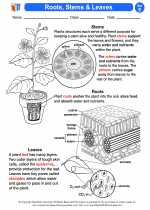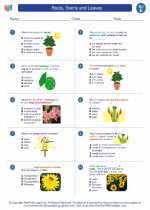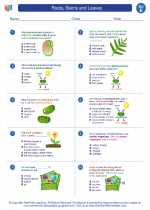Photosphere
The photosphere is the visible surface of the sun that emits light and heat. It is the layer of the sun that we see when we look at it with the naked eye or through a telescope equipped with a proper solar filter.
The photosphere is not a solid surface like the Earth's surface. Instead, it is a layer of hot, dense plasma (ionized gas) that constantly churns and moves due to the convective motion of the solar material. This motion causes the granulation pattern that gives the photosphere its mottled appearance.
Key Facts about the Photosphere:
- Temperature: Approximately 5,500 degrees Celsius
- Composition: Primarily hydrogen and helium
- Features: Sunspots, granules, and solar flares can be observed on the photosphere
- Importance: The photosphere is the layer of the sun where most of the sunlight that reaches the Earth originates
Study Guide:
To understand the photosphere better, consider the following study points:
- Describe the composition and temperature of the photosphere.
- Explain the process of convection in the photosphere and how it creates the granulation pattern.
- Discuss the significance of sunspots and solar flares that are observed on the photosphere.
- Compare the photosphere to the Earth's surface and explain the differences in their physical characteristics.
- Research and present the various methods used to observe and study the photosphere, including solar telescopes and spacecraft missions.
Understanding the photosphere is essential for comprehending the sun's behavior and its impact on Earth and the rest of the solar system.
.◂Science Worksheets and Study Guides Fifth Grade. Roots, Stems and Leaves
Study Guide Roots, Stems and Leaves
Roots, Stems and Leaves  Activity Lesson
Activity Lesson Roots Leaves
Roots Leaves  Worksheet/Answer key
Worksheet/Answer key Roots, Stems and Leaves
Roots, Stems and Leaves  Worksheet/Answer key
Worksheet/Answer key Roots, Stems and Leaves
Roots, Stems and Leaves  Worksheet/Answer key
Worksheet/Answer key Roots, Stems and Leaves
Roots, Stems and Leaves  Worksheet/Answer key
Worksheet/Answer key Roots, Stems and Leaves
Roots, Stems and Leaves  Vocabulary/Answer key
Vocabulary/Answer key Roots, Stems and Leaves
Roots, Stems and Leaves  Vocabulary/Answer key
Vocabulary/Answer key Roots, Stems and Leaves
Roots, Stems and Leaves  Vocabulary/Answer key
Vocabulary/Answer key Roots, Stems and Leaves
Roots, Stems and Leaves 

 Activity Lesson
Activity Lesson
 Worksheet/Answer key
Worksheet/Answer key
 Worksheet/Answer key
Worksheet/Answer key
 Worksheet/Answer key
Worksheet/Answer key
 Worksheet/Answer key
Worksheet/Answer key
 Vocabulary/Answer key
Vocabulary/Answer key
 Vocabulary/Answer key
Vocabulary/Answer key
 Vocabulary/Answer key
Vocabulary/Answer key

The resources above cover the following skills:
LIFE SCIENCE (NGSS)
From Molecules to Organisms: Structures and Processes
Students who demonstrate understanding can:
Support an argument that plants get the materials they need for growth chiefly from air and water.